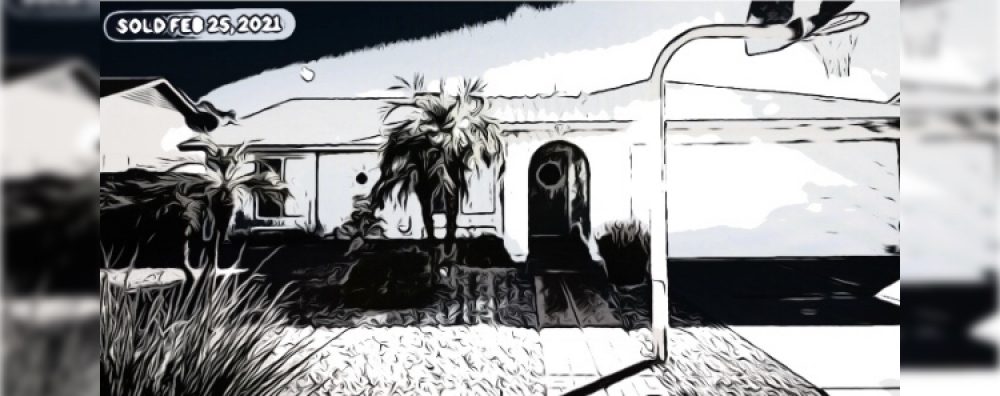A: Phoenix is a confusing place. We live in the Sonoran Desert and receive about 8 inches of rainfall annually. Having experienced steady population growth since the 1960s and chronic drought since the 1990s, our water reservoirs are now at historic lows. But if you run anywhere in the city, you will inevitably see water-intensive lawns, parks, golf courses, and swimming pools. You might also see extensive, flowing canals and understandably wonder, “How bad is the water scarcity here, really? And what can we do to meaningfully address it?” In short, the problem is more complicated than just these visible examples of extravagance, and systemic solutions also merit a second glance.
I’m addressing these questions as part of @RunJanji’s #FollowtheH2Ocampaign, which asks participants to research their local water source, run near it, and raise some awareness about related environmental and social issues. Phoenix receives the majority of its water from the Colorado, Salt, and Verde Rivers, none of which are visible, as such, from within city limits. Though the Salt River originally ran through the Phoenix area, a series of dams now reduces it to little more than a trickle in town, and that’s on a good day. Most Phoenicians never see the natural sources of their water, nor do they know its most common destination, which is, in fact, farmland.
All of the aforementioned rivers travel through reservoirs, canals, underground pipes, and sometimes water treatment plants, before supplying local fields and faucets. It’s an elaborate process, first initiated by the Hohokam in around 300 CE for large-scale farming. These early settlers dug out Phoenix’s original canals in order to channel Salt River water for their vegetable and legume crops. Such irrigation enabled their civilization to flourish until they were forced to disperse in the late 1300s, during a mega-drought not unlike the one occurring now.
So, while I imagine that many participants in the #FollowtheH2O campaign are summiting mountains and tracing whole tributaries, I’m plodding along a patchwork of urban waterways. Without this canal system —which now serves neighborhoods, citrus groves, and alfalfa fields alike— the very city I call home would not exist. Even as Lake Mead, the nation’s largest water reservoir and one of Phoenix’s major sources, dips to 37% full, these canal levels remain notably consistent. Looking at them, you do not see drought. But since surface and groundwater are both low throughout the state, some canals have acquired another function: they now also transport river water to large pools that help replenish depleted underground aquifers.
Still, can this canal system really save us from our current water scarcity?
Though Phoenix’s water demand has remained relatively steady, in large part due to reduced outdoor water use (e.g. xeriscaping), its water scarcity issue is regional in scale. Throughout Arizona, Nevada, California, and Utah, water supplies are shrinking and urban populations are growing. But since the vast majority of Arizona water (~70%) is still used by rural farmers, including those on the Phoenix outskirts, drought contingency plans have started with rationing canal water for agricultural, not municipal, use. This means the system could save us by (at least partly) abandoning its original purpose. Yet, if rationing canal water results in faster depletion of groundwater sources, which also serve most farmers throughout Arizona, those precautions could still backfire. It all depends on how long the current mega-drought and population boom lasts, as well as how local farmers and residents respond.
When I run along the local canals, I remember the Hohokam, as well as the farmers, ranchers, and developers, who have relied upon this impressive infrastructure. It’s likely that Arizona’s system, coupled with proactive drought contingency plans, will be able to sustain Phoenix through this and future megadroughts, though not without social, environmental, and economic costs. Those exact costs remain unclear, as our system has a lot of moving, and often invisible, parts. But if we think about where our water comes, as well as where it goes, we’re able to follow a flow of not just H2O, but also money, power, and possibility. In this sense, #FollowtheH2O means we start to know our city on two feet, and with two very wide eyes.
General Bibliography:
“In Era of Drought, Phoenix Prepares for a Future Without Colorado River Water”
https://e360.yale.edu/features/how-phoenix-is-preparing-for-a-future-without-colorado-river-water
“Could Phoenix survive a water crisis?”
https://thecounter.org/could-phoenix-survive-a-water-crisis-dcp/
“Water scarcity footprint reveals impacts of individual dietary choices in US”
https://news.umich.edu/water-scarcity-footprint-reveals-impacts-of-individual-dietary-choices-in-us/
“The Ancient Waterways of Phoenix, Arizona”
https://longreads.com/2020/02/05/the-ancient-waterways-of-phoenix-arizona/
“What is a Megadrought?”
https://www.nytimes.com/article/what-is-a-megadrought.html
“2020 State Agriculture Overview”
https://www.nass.usda.gov/Quick_Stats/Ag_Overview/stateOverview.php?state=ARIZONA
